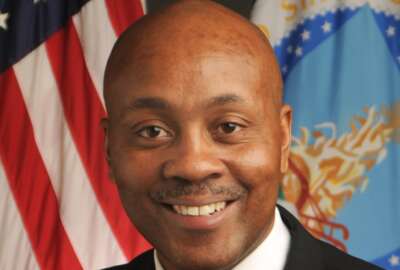Customer experience has become a watchword of the Biden administration when it comes to federal agency management. And why not? A consultant might say, agencies have a lot of opportunity for improvement in this area.
As our Jory Heckman reported last week, the overseers of the Technology Modernization Fund will devote a cool hundred million dollars to projects that cut wait times or excessive paperwork for public-facing federal services. This revelation, from the General Services Administration and the White House, coincided with an IRS announcement that people late on their taxes can try out a phone line and reach a robot response system to set up their payments.
The agency is expanding its use of so-called voice and chat bots to take a burden off human phone answerers. That way, the IRS employees will have more time to devote to complicated problems beyond the capabilities of the bots. And callers with those problems won’t have on-hold times long enough to hear a Beethoven piano concerto.
I’m kidding on that last point. If only on-hold music was so compelling.
But the effort can’t come soon enough. On Wednesday, the National Taxpayer Advocate had bad news for the IRS, in its objectives report for 2023. In the more recent filing season, it answered only 10% of its phone calls — and even then the average time on hold was a half hour.
The IRS isn’t doing so well with paper returns, either. Its paper return backlog has reached 21 million returns. It’s processing them at about 240,000 per week. It will have to double that rate to get through it all this year, the NTA stated.
So there’s work to do at this high-impact service provider, as the administration has designated the IRS and 19 other agencies for purposes of customer experience.
The idea of improving customer experience isn’t new. But the state of the art keeps moving. About 20 years ago, self-service kiosks came into vogue. At the Department of Veterans Affairs, they’re about to disappear from the lobbies of medical centers. A release from VA states the agency’s national contract for the VetLink kiosks expires in September. Now VA is introducing check-in for appointments using a phone and QR code affixed to a poster. It’ll save veterans a little time in verifying who they are.
Three themes in customer experience I think need pointing out:
- At its best, technology-powered CX eases burdens on both constituents served and on employees doing the serving. But it doesn’t always reduce the headcount required. I noticed this at the airport recently. The airline might have had three dozen check-in kiosks, even though you’ve “checked in” online. After re-checking in for purposes of obtaining a luggage tag, I found I had to still wait in a slow line for an agent to check my ID and yank my luggage over to the conveyor belt. I’m not sure who saved what in this chain of transactions.
- Self-service, which is preferable to human service in many circumstances, merely time-shifts burdens people have to take on at some point — registering, creating an account and filling in data, applying for a license or permit. Here, the government can exceed the private sector if only it could accomplish the dream of one person, one account, every agency. Contrast that to, say, medical health records in the private sector. All the practices have some sort of semi-comprehensible portal. But none of the portals connect. Plastic clipboards have been replaced by stovepipe portals.
- It’s easy for automated response to get a little off course. You’ve got to design systems carefully. I bot-chatted with the manufacturer of my grandfather clock, which needs repair. It’s at least 25 year old, purchased a while back by my late parents, and it is certainly out of warranty. I found an authorized repair shop at the web site, but then received an email asking me for proof of purchase so they could find my order. The bot introduced a bit of incoherence.
A footnote: The federal government in some circumstances is the provider of last, or only, resort. Talk about customer experience. I witnessed where a federal agency came through. A fellow traveler on a two-week rafting trip I took in the Grand Canyon fell sick. There is literally no way out, other than a National Park Service helicopter. The guide had a satellite phone, the only way to reach the NPS. A shiny blue and yellow helicopter arrived within a half hour. An NPS crew examined the man, loaded him aboard, then swooped out. A few days later we heard he was recovering in an Arizona hospital.
Nearly Useless Factoid
By Robert O’Shaughnessy
For the 2002 Winter Olympics at Salt Lake City, the Olympic torch relay passed through Arches National Park as well as 21 other U.S. National Parks.
Source: National Geographic
Copyright
© 2024 Federal News Network. All rights reserved. This website is not intended for users located within the European Economic Area.
